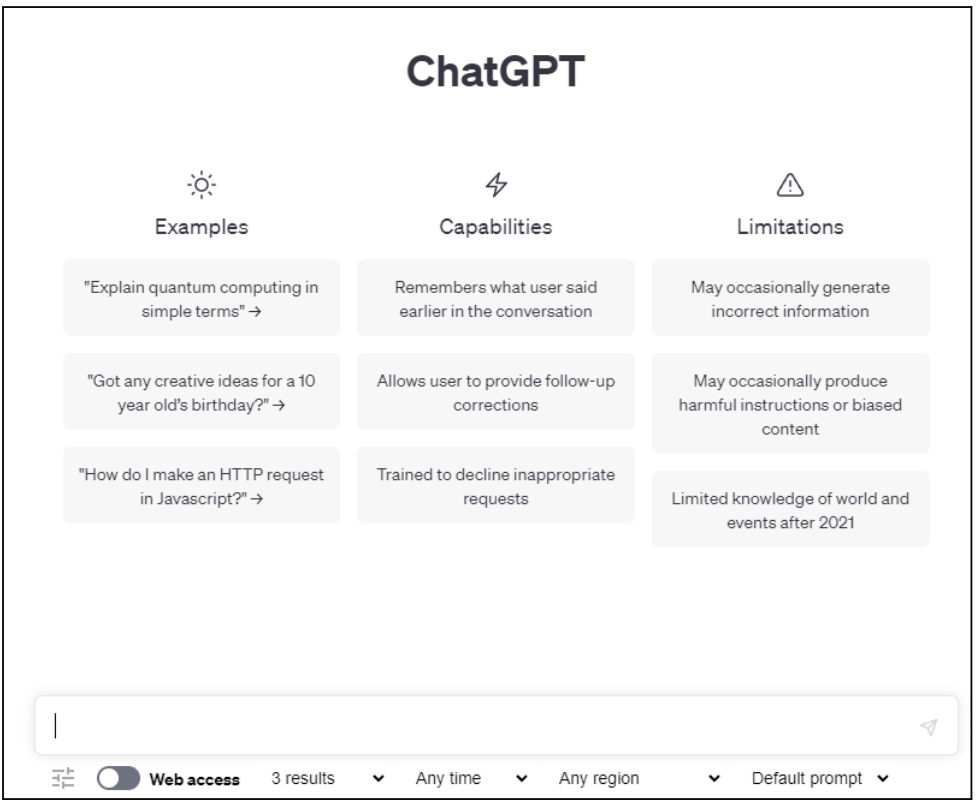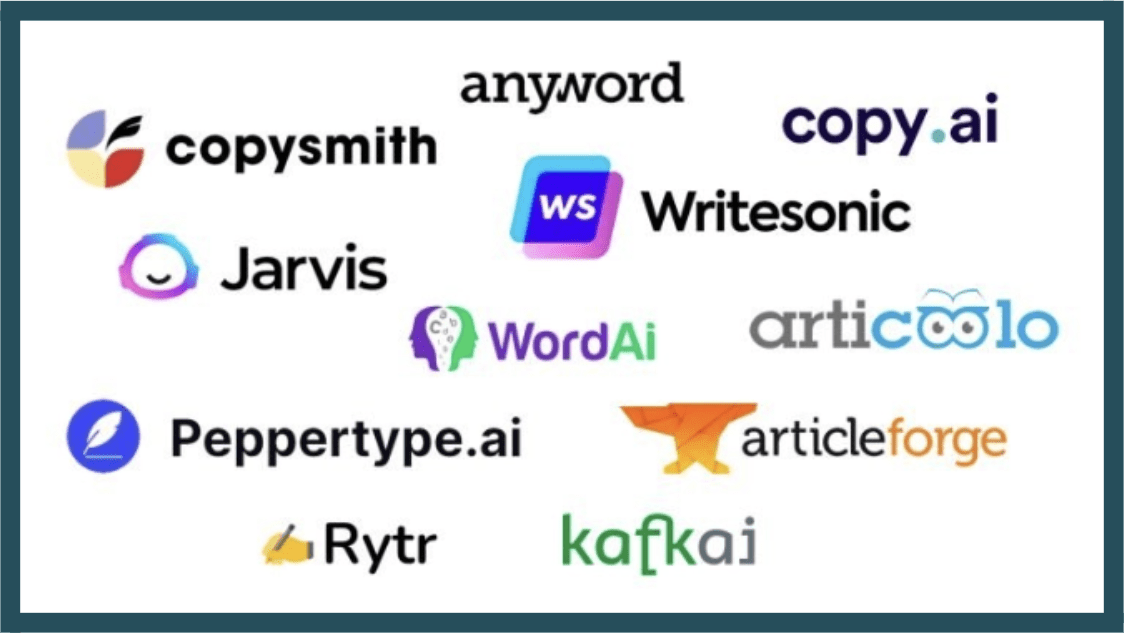Artificial intelligence (AI) is a rapidly growing field that has the potential to change the world in significant ways. With the rise of AI, there is a need to balance innovation with the responsibility to ensure that the technology is used efficiently and ethically. But what really is AI? Should we be afraid of its rising popularity? Let’s understand what AIs are and some examples that are often used by marketers.
What is Artificial Intelligence (AI)?
AI is a branch of computer science that creates machines that can perform tasks that typically require human intelligence, such as visual perception, speech recognition, decision-making, and language translation. AI can be broadly classified into narrow or weak AI and general or strong AI. Narrow AI is designed to perform specific tasks, while general AI can perform any intellectual task that a human can.

With the rise of AI technology, will they replace us in the future? Here’s how the famous ChatGPT looks like
The Rise of AI
AI is rapidly changing our world, from healthcare to transportation to education. In healthcare, AI diagnoses diseases and develops personalised treatment plans. In transportation, self-driving cars are being developed to make our roads safer and reduce congestion. In education, AI-powered systems personalise learning and provide students individualised feedback.
However, the rise of AI has also brought about ethical concerns, as individuals and society can use the technology harmfully. These concerns have led to the development of ethical guidelines for using AI.

Image from Dal-e. You wouldn’t even know this is an AI Image
The Ethics of AI
The ethics of AI refers to the principles and values that should guide the development and use of AI technology. Ethical AI ensures that the technology benefits individuals and society while minimising the risks and harms associated with its use.
Here are some of the key ethical principles that should guide the development and use of AI:
Transparency and Explainability
AI systems should be designed in a transparent and explainable way. This means that the decision-making processes of the AI system should be understandable to humans. This is especially important in applications such as healthcare and criminal justice, where the decisions made by AI systems can significantly impact individuals.
Fairness and Non-discrimination
AI systems should be designed to be fair and non-discriminatory. This means the systems should not discriminate against individuals based on race, gender, religion, or other characteristics. This is important in applications such as hiring and lending, where biased AI systems can perpetuate existing inequalities.
Privacy and Security
AI systems should be designed to protect the privacy and security of individuals. This means that the systems should be designed to collect only the necessary data and use secure methods to store and transmit the data. This is especially important in applications such as healthcare and finance, where the data collected by AI systems can be highly sensitive.
Responsibility and Accountability
AI developers and users should be responsible for the consequences of their actions. This means they should be accountable for any harm caused by the AI systems they develop or use. This is especially important in applications such as autonomous vehicles, where the actions of the AI system can have life-or-death consequences.
Human Control
AI systems should be designed to ensure humans control decision-making processes. This means that humans should be able to override the decisions made by AI systems if necessary. This is important in applications such as autonomous weapons, where the decisions made by AI systems can have significant consequences.
Achieving the Balance
Achieving the balance between innovation and responsibility in AI requires collaboration between AI developers, policymakers, and society.
Here are some steps that can be taken to achieve this balance:
- Develop Ethical Guidelines: AI developers should develop ethical guidelines for creating and using AI systems. These guidelines should be based on the ethical principles discussed above and reviewed regularly to ensure they remain relevant as AI technology evolves.
- Educate AI Developers and Users: AI developers and users should be educated on the ethical principles of AI and the potential risks and harms associated with its use. This education should be ongoing and integrated into the development and use of AI systems.
- Involve a Diverse Range of Stakeholders: A diverse range of stakeholders, including policymakers, industry experts, academics, and members of civil society, should be involved in the development of AI technology and the ethical guidelines that govern its use. This will ensure that a wide range of perspectives are considered, and the technology is developed and used to benefit everyone.
- Develop Regulatory Frameworks: Policymakers should develop regulatory frameworks that govern the development and use of AI technology. These frameworks should be based on the ethical principles of AI. They should be designed to ensure the technology is developed and used to benefit individuals and society.
- Foster a Culture of Responsibility: Finally, we need to foster a culture of responsibility around the development and use of AI technology. This means that AI developers and users should take responsibility for the consequences of their actions and work together to ensure that the technology is developed and used in ways that benefit everyone.
 Credit: gmast3r/Getty Images
Credit: gmast3r/Getty Images
AI in Marketing
AI technology is transforming the marketing industry, allowing marketers to make better decisions and more effectively target their audiences.
Here are some examples of how AI is being used in marketing:
- Personalised Marketing: AI-powered systems can analyse customer data, including past purchases, online behaviour, and demographics, to create customised marketing messages and offers that are tailored to each individual customer.
- Chatbots: Chatbots are AI-powered virtual assistants that can interact with customers and answer their questions in real time. They are used on websites, social media, and messaging apps to provide customer service and support.
- Predictive Analytics: AI-powered predictive analytics tools can analyse large amounts of data to identify patterns and predict future outcomes. In marketing, these tools can remember which customers are most likely to purchase or respond to a marketing message.
- Image and Video Recognition: AI-powered image and video recognition tools can analyse visual content and identify objects, people, and scenes. This technology is used in marketing to create personalised product recommendations based on images that customers have shared on social media.
- Content Creation: AI-powered content creation tools can automatically generate blog posts, social media updates, and other types of content based on data and trends. This technology can help marketers to create more relevant and engaging content for their audiences.
- Ad Targeting: AI-powered ad targeting tools can analyse customer data to identify the most relevant audiences for a particular ad campaign. This technology can help marketers to target their ads more effectively, reducing wasted spend and increasing ROI.

Fears and Apprehensions of Using AI Technologies
The fear and uncertainty surrounding emerging technologies such as AI are not uncommon, but there are several ways to alleviate these fears and concerns:
Education and Awareness
One of the most effective ways to lessen the fears of emerging technology is to educate people about it. This includes increasing public awareness about the technology, how it works, and its potential benefits and risks. Providing accessible and accurate information about AI can help people to understand it better and alleviate their concerns.
Transparency and Accountability
Transparency and accountability are critical in reducing the fears of AI. Companies and organisations developing and using AI technology should be open and transparent about how they are using the technology, what data they are collecting, and how they are protecting the privacy and security of individuals. This helps build trust between companies and individuals, reducing concerns about the technology.
Collaboration and Communication
Collaboration and communication between industry experts, policymakers, and civil society can help to identify and address the potential risks and challenges associated with AI. Open and honest communication can address concerns and build trust.
Ethical Frameworks and Guidelines
The development of ethical frameworks and guidelines for AI can ensure that the technology is developed and used to benefit individuals and society. These frameworks should be developed in collaboration with stakeholders and based on AI’s ethical principles, such as fairness, transparency, accountability, and privacy.
Human Oversight
Human oversight ensures that AI technology is used responsibly and ethically. Human direction can help to ensure that AI systems are not making decisions that harm individuals or society and can help to address concerns about the loss of jobs or human decision-making.
Lessening the fears of emerging technologies such as AI requires a collaborative effort between stakeholders, transparency, and accountability, ethical frameworks and guidelines, education and awareness, and human oversight. By taking these steps, we can ensure that AI technology is developed and used to benefit everyone while minimising its risks and challenges.
Conclusion
The rise of AI has the potential to change the world in significant ways, but it also brings about ethical concerns that need to be addressed. Achieving the balance between innovation and responsibility in AI requires collaboration between AI developers, policymakers, and society. By developing ethical guidelines, educating AI developers and users, involving a diverse range of stakeholders, developing regulatory frameworks, and fostering a culture of responsibility, we can ensure that AI technology is developed and used in ways that benefit everyone.
Read more related blogs: All Blogs
